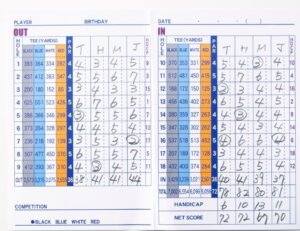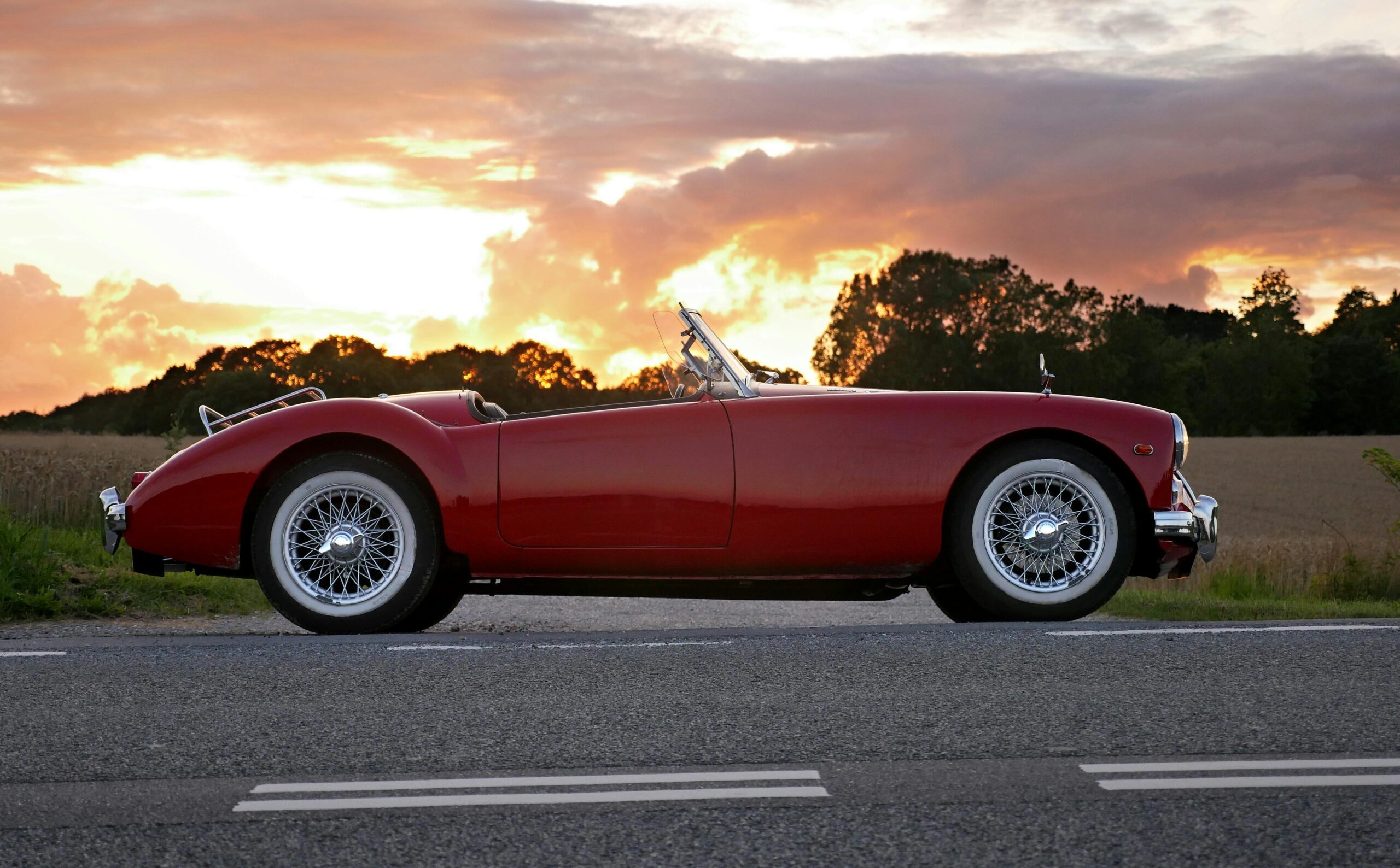
In golf, an eagle scores two strokes under par for a hole. It’s a pretty impressive feat, and much rarer than a birdie (one stroke under par).
Here’s how it works:
- Par: Each hole on a golf course has a par, which is the number of strokes a skilled golfer would typically take to get the ball in the hole. Par 3s are the shortest holes, and par 5s are the longest. Most holes are par 4s.
- Eagle: So, if you score an eagle on a par 4 hole, that means you got the ball in the hole in just two strokes! On a par 5, you’d need three strokes for an eagle. And on a par 3, the only way to get an eagle is with a hole-in-one!
Eagles are relatively rare, even for professional golfers. The average golfer might make one or two eagles in their entire lifetime. But they’re definitely something to celebrate! When a golfer does make an eagle, they usually let out a big yell of excitement, and their playing partners will give them a high five.
Here are some fun facts about eagles in golf:
- The term “eagle” is thought to have originated in the early 1900s, as an extension of the birdie theme.
- The first recorded eagle in professional golf was made by Willie Anderson in 1890.
- The longest recorded eagle in professional golf was made by Gene Sarazen in 1935, on a 534-yard hole!
- The most eagles ever made in a single round by a professional golfer is 5, by Bruce Crampton in 1975.
So, next time you’re out on the golf course, keep an eye out for eagles! You might just witness one of the most exciting shots in the game.
Read also: How wide is a golf cart? – 2024
What is a birdie in golf?
In golf, a birdie is a delightful occurrence – it’s a score of one stroke under par for a hole. It’s a much-desired feat for golfers of all levels, representing a small victory on the course. Imagine sinking your putt in one stroke less than expected – that’s the birdie magic!
Here’s how it works:
- Par: Each hole on a golf course has a designated par, which is the number of strokes a skilled golfer would typically take to get the ball in the hole. Par 3s are the shortest holes, par 5s are the longest, and most holes are par 4s.
- Birdie: So, if you manage to get the ball in the hole in one stroke less than the par for that hole, you’ve scored a birdie! On a par 4 hole, a birdie would be a score of 3 strokes. On a par 3, it would be 2 strokes, and on a par 5, it would be just 4 strokes.
Birdies are relatively uncommon, especially for beginner golfers. They require a combination of skill, precision, and a bit of luck. But when they happen, they’re cause for celebration! Golfers often raise their fists in the air, give each other high fives, and maybe even let out a joyous shout.
Here are some fun facts about birdies in golf:
- The term “birdie” is thought to have originated in the early 1900s, as an extension of the scoring terms “eagle” (two under par) and “bogey” (one over par). Some believe it might have been inspired by the slang term “bird” meaning something excellent.
- The first recorded birdie in professional golf was made by James Hepburn in 1902.
- The longest recorded birdie in professional golf was made by Justin Thomas in 2017, on a 498-yard hole!
- The most birdies ever made in a single round by a professional golfer is 13, by Annika Sörenstam in 2001.
So, next time you’re out on the golf course, keep an eye out for birdies! You might just witness one of the most exciting and rewarding shots in the game. And who knows, maybe you’ll even score one yourself! Just remember, practice makes perfect, and every birdie starts with a good swing. Good luck!
Is an eagle or birdie better in golf?
In golf, a bogey is the opposite of an eagle! It’s a score of one stroke over par for a particular hole. While not as exciting as an eagle, it’s still a decent score for most golfers, especially beginners.
Here’s how it works:
- Par: As mentioned before, each hole has a par, which is the expected number of strokes for a skilled golfer to complete it.
- Bogey: If you take one stroke more than par on any hole, that’s a bogey. So, on a par 4 hole, a bogey would be a score of 5 strokes. On a par 3, it would be 4 strokes, and on a par 5, it would be 6 strokes.
Bogeys are actually quite common, even for good golfers. A round with zero bogeys is a great achievement, and most golfers would be happy with a round where they average one or two bogeys per hole.
Here are some fun facts about bogeys:
- The term “bogey” is said to have originated in the early 1900s, possibly from the British army term “bogie” meaning goblin or phantom.
- The average golfer might make around 10-15 bogeys per round, depending on their skill level.
- There are also terms for scores worse than a bogey, like double bogey (two strokes over par), triple bogey (three strokes over par), and so on.
So, next time you’re playing golf, don’t get discouraged if you make a few bogeys. They’re a normal part of the game, and even the best golfers make them sometimes! Just keep practicing and having fun, and you’ll be making birdies and eagles in no time.
I hope this explanation is helpful! Let me know if you have any other questions about golf terms or anything else.
Read also: How Old to Rent a Golf Cart? – 2024
Famous Eagle Moments in Golf History

Golf, with its rich history and countless memorable moments, has seen some truly extraordinary instances where players have soared to new heights by achieving the elusive eagle.
These moments are not just about numerical achievement; they represent the pinnacle of skill, strategy, and often, sheer audacity.
1. Tiger Woods’ “Shot in the Dark” – 16th Hole, 2005 Masters
Before we delve into the realm of eagles, it’s essential to grasp the fundamentals of golf scoring. Each hole on a golf course has a predetermined number of strokes called “par,” representing the standard a skilled golfer should require to complete the hole. As players progress through the course, their performance is measured against this par value.
Read also: Golf
Defining an Eagle in Golf
Now, let’s focus on the star of our discussion: the eagle. In golf, an eagle is a score achieved when a player completes a hole in two strokes less than par. This means that if a hole has a par value of 4, scoring an eagle entails finishing the hole in just 2 strokes. It’s a feat that requires not only skill but also a touch of finesse and strategic play.
The Rarity and Prestige of an Eagle
Eagles are the unicorns of golf scores, rare and highly prized. Professional golfers often gauge their performance by the number of eagles they accumulate during a tournament. The rarity of eagles adds to their prestige, making them a significant highlight in a golfer’s career.
Read also: What is an Executive Golf Course?
Strategies to Aim for an Eagle
Achieving an eagle requires more than just technical prowess. Golfers aiming for this exceptional score must strategize, considering factors like the hole layout, wind conditions, and their own strengths and weaknesses. Precision and calculated risk-taking often play crucial roles in the pursuit of an eagle.
Conclusion
In conclusion, the eagle in golf represents more than just a score on a card. It embodies the pursuit of excellence, the triumph over challenges, and the celebration of skill and precision. As we unravel the mysteries behind this elusive term, it becomes evident that an eagle is not just a numerical achievement but a symbol of mastery in the art of golf.
FAQS
- How rare is it to score an eagle in professional golf?Scoring an eagle in professional golf is relatively rare, with statistics showing that only a small percentage of holes result in eagles during tournaments. The difficulty of achieving an eagle adds to its prestige in the golfing world.
- What strategies can amateur golfers employ to increase their chances of scoring an eagle?Amateur golfers looking to enhance their chances of scoring an eagle should focus on precision, strategic play, and mastering specific shots that commonly lead to eagles. This may involve practicing long-range putting, honing short-game skills, and understanding the nuances of each golf course.
- Are there specific golf courses known for offering more eagle opportunities?Yes, certain golf courses are designed in a way that presents more opportunities for players to score eagles. These may include shorter, more strategically challenging holes, where skilled golfers can take advantage of their abilities to achieve lower scores.
- Do eagles have a psychological impact on a golfer’s performance?Scoring an eagle can significantly boost a golfer’s confidence and motivation. The psychological impact often leads to improved performance in subsequent holes, as the player carries the positive momentum forward.
- Are there any controversies surrounding the concept of eagles in golf?While not common, there have been occasional debates or controversies regarding scoring eagles in golf. These debates may revolve around rule interpretations, exceptional circumstances during play, or discussions on whether certain shots that led to eagles were within the spirit of fair play.









